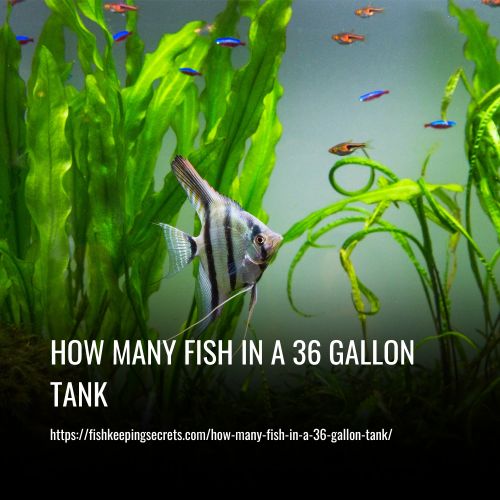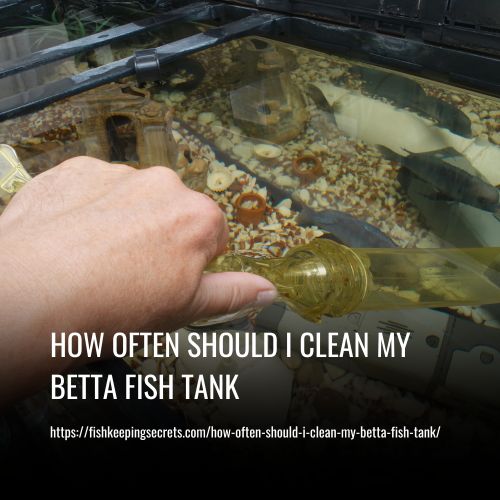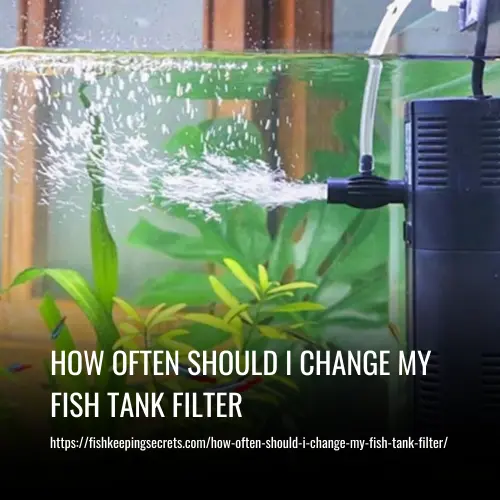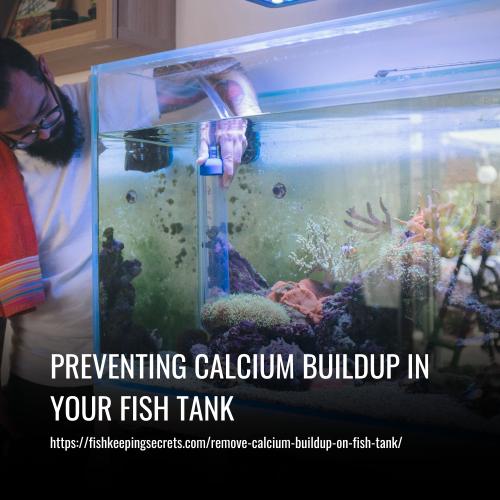How To Get Rid Of Protein Film In Fish Tank
This post contains affiliate links. As an Amazon Associate, we earn from qualifying purchases.
Protein film in fish tanks can be a common and unsightly issue for many aquarium owners. This thin layer of protein can accumulate on the surface of the water, causing a greasy or oily appearance that detracts from the beauty of the tank and can also affect the health of the fish and other aquatic life.
To get rid of protein film in fish tank, follow these steps:
- 1. Skimming the Surface with a Paper Towel
- 2. Using a Surface Skimmer
- 3. Applying Aquarium Additives
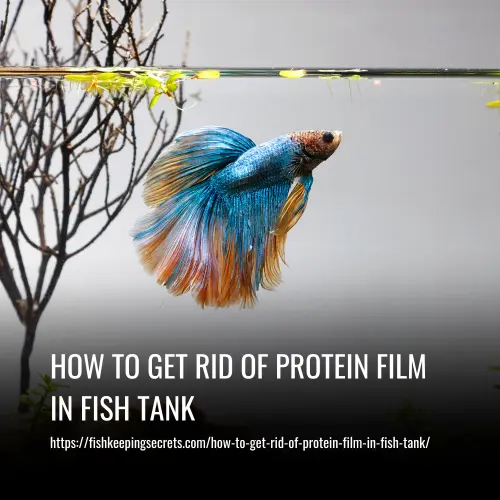
How To Get Rid Of Protein Film In Fish Tank
There are several methods you can use to remove protein film from your fish tank and maintain clean and clear water.
1. Skimming the Surface with a Paper Towel
One simple and quick method is to turn off all your equipment and place a paper towel on the water’s surface. The paper towel will absorb the protein film, leaving your aquarium water clean and clear. Remember to turn your equipment back on after removing the film.
2. Using a Surface Skimmer
Another effective method is to use a surface skimmer. This device can be attached to your aquarium filter’s inflow. The skimmer has two holes: one at the top to draw in the protein film and another at the bottom to take in water. This process eliminates the floating oil film within minutes.
3. Applying Aquarium Additives
Some aquarium additives are specifically designed to break down protein film and improve water quality. However, it’s important to use these products sparingly to avoid disrupting the balance of your tank’s ecosystem. Follow the manufacturer’s instructions carefully and consult a professional before introducing new additives to your fish tank.
By regularly removing protein film and maintaining good water quality, you can ensure a healthy and clean environment for your fish.
Identifying Protein Film in Fish Tank
Protein film is a common issue in fish tanks and can be easily identified by the thin, oily layer floating on the water’s surface. This film is often caused by excess nutrients, decaying organic matter, or insufficient water movement.
You can spot protein film by observing the appearance of the water’s surface in your fish tank. Look for a shiny, oil-like appearance on the surface, as well as the presence of tiny bubbles or foam along the edges or corners of the tank. Additionally, the film can reduce water clarity by blocking light, and it may make it more difficult to maintain proper water chemistry as gases struggle to dissipate.
It’s important to address protein film promptly, as it can negatively impact the overall health of your aquarium inhabitants. In the following sections, we will discuss various methods to remove and prevent protein film in your fish tank.
Causes of Protein Film in Fish Tank
Protein film in fish tanks is commonly caused by a lack of proper aeration, fish waste and oily fish food, and inadequate filtration or malfunctioning equipment.
1. Insufficient Surface Agitation
The buildup of protein and oil layers on the water surface can be prevented with good water movement caused by filters and aerators. Proper aeration helps to break down the protein film and ensure a healthier environment for the fish.
2. Fish Waste and Oily Fish Food
Oily and greasy fish foods contribute to oily droppings, which can result in the formation of protein film. Additionally, the fish’s natural digestive system breaks down food, producing oils and proteins that eventually rise to the surface. To reduce protein film caused by waste, it is important to avoid overfeeding and use high-quality fish food.
3. Inadequate Filtration or Malfunctioning Equipment
Malfunctioning or inadequate filters and pumps can contribute to the formation of protein film. For example, an inefficient or improperly functioning filter may release excess oil into the water, exacerbating the problem. Dissolved organics in the water can also contribute to forming protein films. Regular water changes, proper filtration, and the addition of a surface skimmer can help reduce these dissolved organics and prevent the buildup of protein film.
By addressing these causes and ensuring proper aeration, filtration, and feeding practices, fish owners can help prevent and reduce protein film in their tanks, resulting in a cleaner and healthier environment for their fish.
Is The Film Harmful To Fish
While the film itself is not directly harmful to fish, its presence can indicate an underlying issue in your tank. If the film is not promptly removed and allowed to accumulate, it can affect the oxygen levels in the water. The oily substance acts as a barrier, preventing oxygen from entering the tank and trapping carbon dioxide inside.
This can lead to suffocation and harm the fish and other inhabitants of the tank. It’s important to maintain good water quality and promptly address any signs of film or grime in your aquarium to ensure the health and well-being of your fish.
Preventing Protein Film in Fish Tank
To prevent protein film in your fish tank, it’s important to focus on proper feeding, regular water changes, and maintaining water quality.
1. Proper Feeding
Avoid overfeeding your fish, as excess waste and nutrients in the water can contribute to protein film formation. Feed your fish only what they can consume within a few minutes and avoid leaving uneaten food in the tank. Consider feeding smaller amounts multiple times a day instead of one large feeding.
2. Regular Water Changes
Performing regular water changes helps maintain a healthy balance of nutrients and chemicals in your fish tank, preventing the buildup of organic waste and protein film. The frequency and amount of water changed depend on the tank size:
Small tanks (5-10 gallons): Once a week, change 10-20% of the water.
Medium tanks (20-50 gallons): Every 2-3 weeks, change 15-25% of the water.
Large tanks (50+ gallons): Once a month, change 20-30% of the water.
3. Maintaining Water Quality
To prevent protein film, it’s crucial to keep your fish tank’s water clean and chemically balanced. Use a quality filter that can efficiently remove debris and excess nutrients. Ensure proper water circulation to prevent stagnant areas where waste can accumulate. Regularly monitor and adjust water parameters such as pH, alkalinity, and nitrate levels as needed.
By following these prevention methods, you can minimize the occurrence of protein film and maintain a clean and healthy environment for your aquatic pets.
FAQs
Protein skimmers are devices that remove organic waste, such as fish feces, undigested food, and proteins, from aquarium water. They can be used in both saltwater and freshwater aquariums. Protein skimmers help prevent the spread of disease-causing parasites and bacteria by removing their food source. They also aid in algae control by collecting debris before it can turn into phosphates. Additionally, protein skimmers promote coral health by removing harmful substances from the water, allowing more light to reach the corals.
Protein skimmers are not necessary for freshwater aquariums. They are designed to remove protein from the water, but this process is not as effective in freshwater as it is in saltwater. Unless the water in a freshwater aquarium has a very high concentration of protein, protein skimmers will not work well. Regular water changes are typically sufficient to keep the water clean in a freshwater aquarium.
A protein skimmer is not necessary for a fish-only tank. However, if you have a saltwater tank or a Nano reef aquarium, a protein skimmer can be beneficial. It is also unnecessary if your tank already has an effective filtration system in place. Investing in a protein skimmer can save you time and reduce the need for frequent water changes. It also helps to boost oxygen levels, prevent algae buildup, and neutralize toxins in the water.
To avoid film during cleaning or water changes, pour water into the tank slowly and carefully, such as along the glass or on a plate placed on the bottom. If there is a small amount of detergent in the water, it will be broken down by the filter. However, it’s best to avoid using detergent altogether. Additionally, adjusting the spray bar slightly lower and reducing the pump’s performance can help prevent excessive bubbles from forming.
You can easily remove the film on top of your fish tank in just a matter of minutes. Using paper towels and gently wiping the surface should take around 5 minutes, especially if the film isn’t too thick. If you have a strong air pump and good water circulation, the oils will be mixed in, and the film should clear within 10 to 15 minutes.
Biofilm or surface scum in a tank can go away on its own in an established setup with stable water parameters. The time it takes for the film to disappear can vary, ranging from a few days to a few weeks. Certain fish, aquatic snails, and shrimp can be helpful in getting rid of the biofilm as they will eat it. Therefore, these organisms can be valuable assets in maintaining a clean and healthy tank.
No, using household cleaners in a fish tank can be harmful and could kill fish. Cleaners may contain harsh chemicals that can interfere with the water’s ph balance, harming fish and other aquatic life. Instead, use aquarium cleaning products and tools designed for aquarium maintenance.
Conclusion
In conclusion, getting rid of protein film in your fish tank is an important part of maintaining a healthy aquatic environment for your fish. By understanding the causes of protein film and implementing regular cleaning and maintenance, you can effectively prevent and remove protein film buildup in your tank.
It’s essential to keep the water surface clean, improve water circulation, and consider adjusting the feeding and filtration to reduce excess protein. Additionally, using a surface skimmer or protein skimmer can help remove protein film and prevent it from returning.
It is important to consistently monitor and maintain water quality to ensure the health and well-being of your fish. Remember that prevention is key, so staying proactive in your maintenance routine will help keep your fish tank free from protein film.

